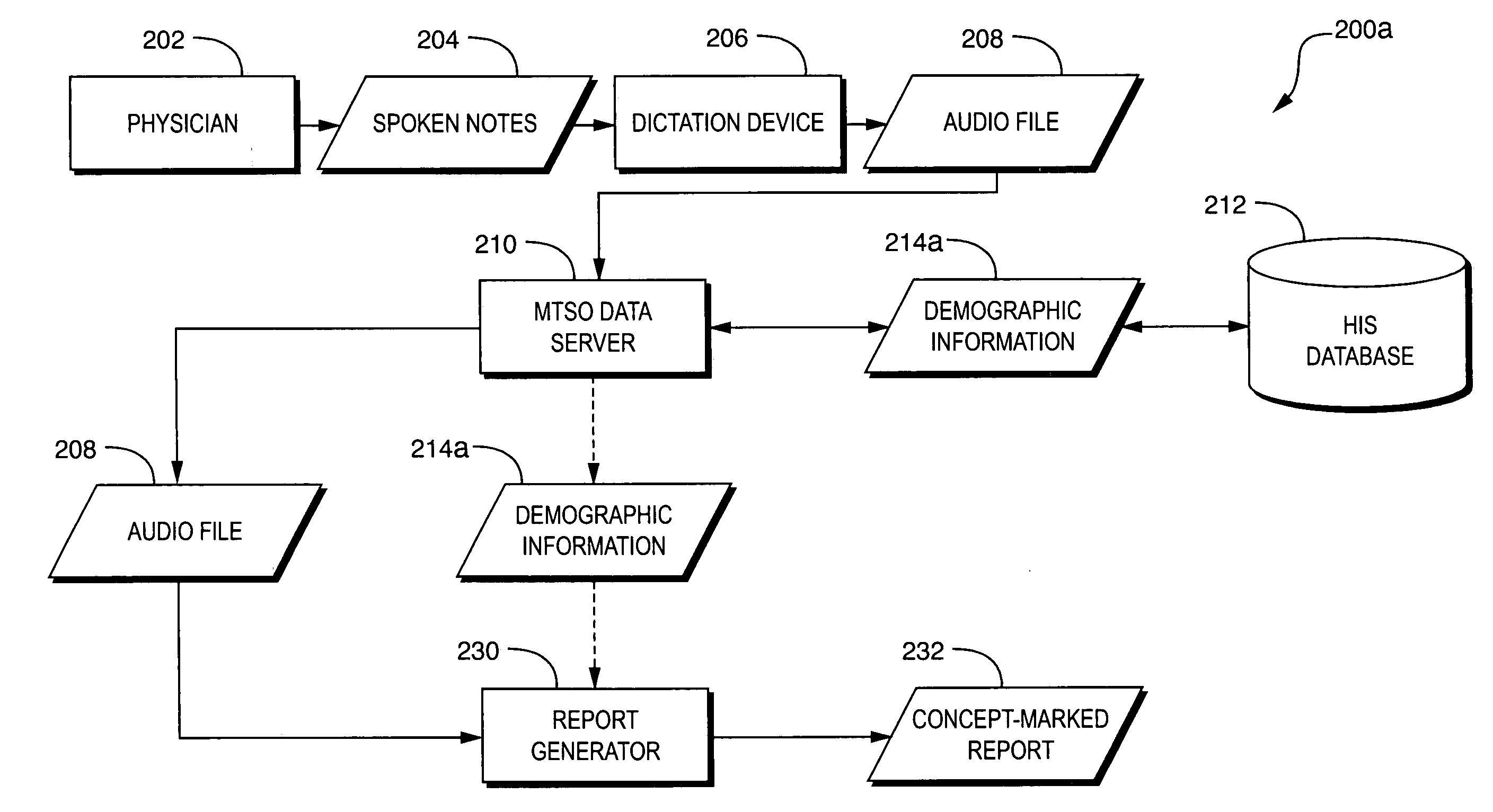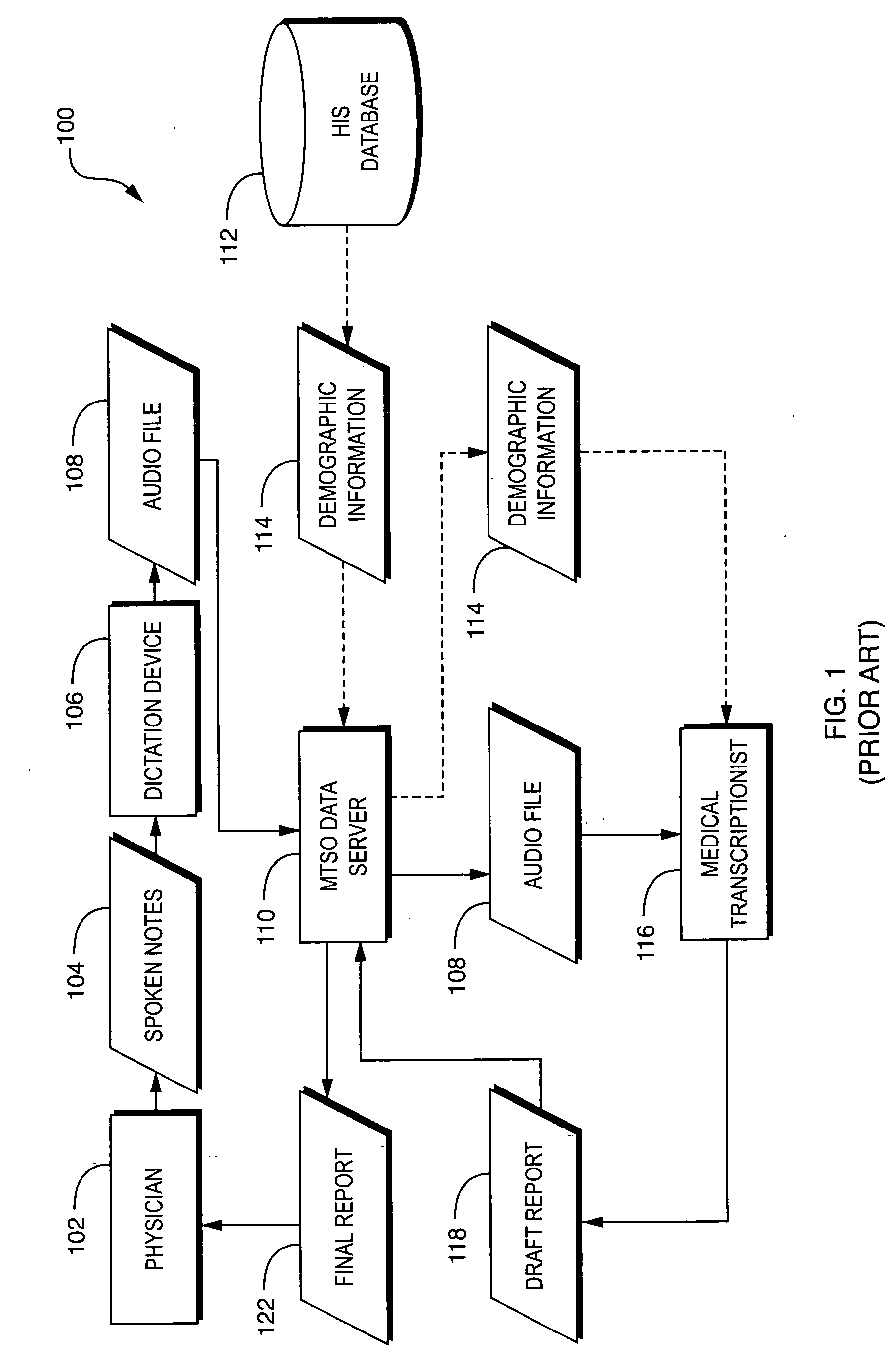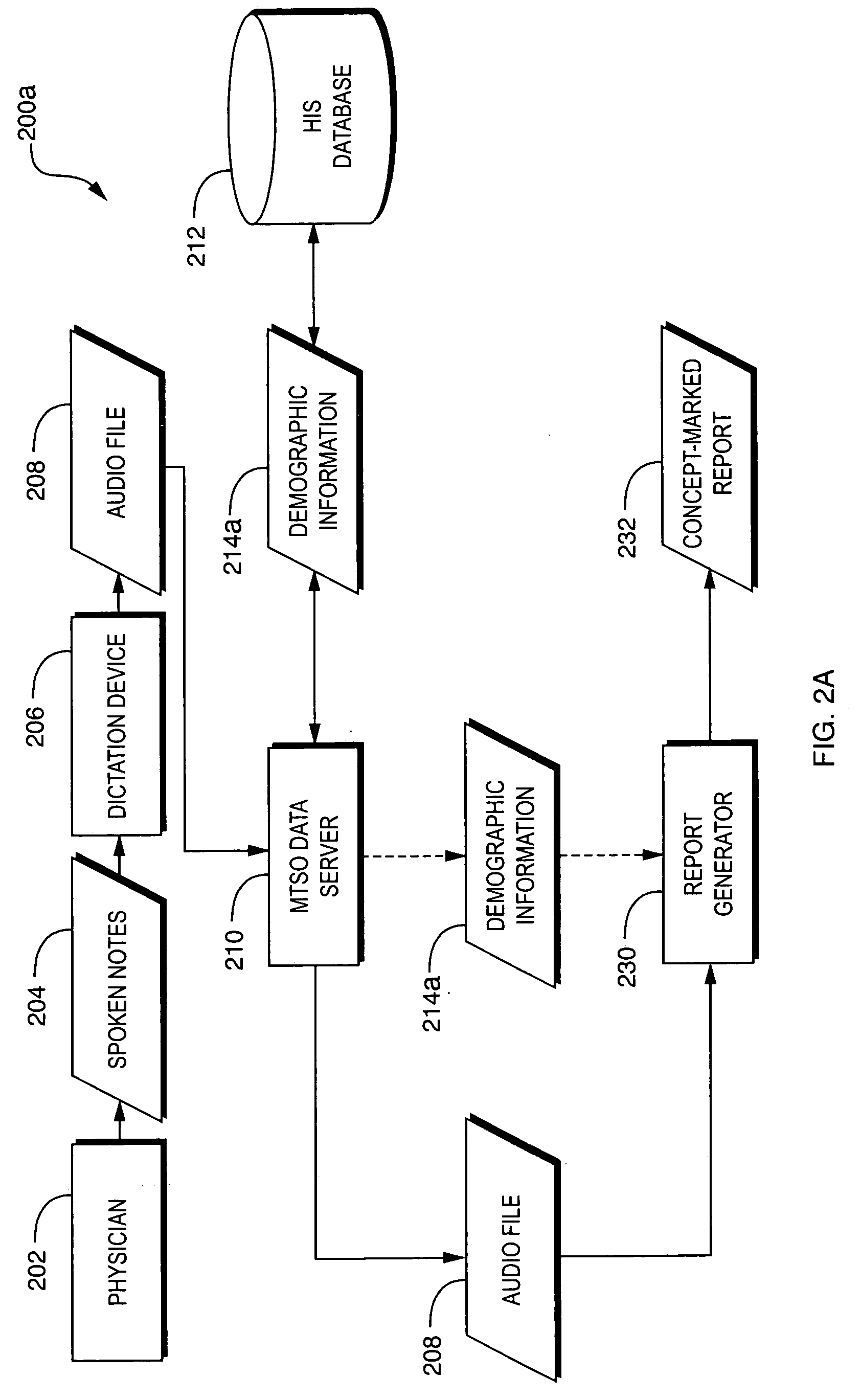Audio signal de-identification
- Summary
- Abstract
- Description
- Claims
- Application Information
AI Technical Summary
Benefits of technology
Problems solved by technology
Method used
Image
Examples
Embodiment Construction
[0030] The term “personally identifying information” refers herein to any information that identifies a particular individual, such as a medical patient. For example, a person's name is an example of personally identifying information. The Health Insurance Portability and Accountability Act of 1996 (HIPAA) includes a variety of regulations establishing privacy and security standards for personally identifying health care information. For example, HIPAA requires that certain personally identifying information (such as names and birthdates) be removed from text reports in certain situations. This process is one example of “de-identification.” More generally, the term “de-identification” refers to the process of removing, generalizing, or replacing personally identifying information so that the relevant data records are no longer personally identifying. Typically, however, personally identifying information is not removed from audio recordings because it would be prohibitively costly t...
PUM
 Login to View More
Login to View More Abstract
Description
Claims
Application Information
 Login to View More
Login to View More - R&D
- Intellectual Property
- Life Sciences
- Materials
- Tech Scout
- Unparalleled Data Quality
- Higher Quality Content
- 60% Fewer Hallucinations
Browse by: Latest US Patents, China's latest patents, Technical Efficacy Thesaurus, Application Domain, Technology Topic, Popular Technical Reports.
© 2025 PatSnap. All rights reserved.Legal|Privacy policy|Modern Slavery Act Transparency Statement|Sitemap|About US| Contact US: help@patsnap.com



